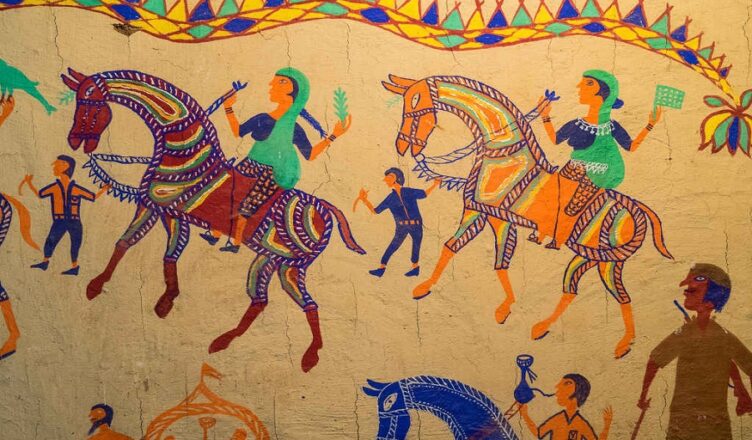A piece of art becomes timeless when it resonates with every generation. An artwork’s continued relevance is what makes it a timeless beauty. From the packed canvases of Pattachitra art and Madhubani art to the singular figurines of Kalighat art, Indian art is imbued with several examples of such timeless genres of art.
Here are a few examples of the same:
1. PattachitraArt
The ancient genre of Pattachitra art gets its name from two words — patta (canvas) and chitra (picture), and refers to paintings made on a cloth canvas. However, the process of making these paints and canvases is as interesting as a Pattachitra painting. Prepared with paints derived from stones and leaves, and canvases made from cotton sarees stiffened with clay and tamarind paste, every step of the process is organic. The heritage village of Raghurajpur in Orissa is well-known for mass producingPattachitra art through magnificent paintings and scrolls.
2. Kalighat Art
Kalighat art gets its name from the Kalighat area of Bengal, where it seems to have originated. While Pattachitra art narrated elaborate stories on canvas, Kalighat art became the condensed form of a Pattachitra painting by focusing on only one or two characters. Some of the earliest Kalighat paintings were sold to British tourists or officers visiting India on official work. Created on mill-made paper, a Kailghat painting focused on recurring themes and motifs like Indian gods and goddesses, popular folktales and religious epics.
3. MadhubaniArt
Madhubani art was one of the earliest forms of Bhitti Chitra (wall art), as people painted the walls of Mithila for Sita’s wedding to Ram. This 2500-year-old art form gradually moved to handmade paper, made with multanimitti, neem juice and cow dung, giving it a light yellow hue — similar to a mud wall. A Madhubani painting showcases several recurrent motifs and symbols, some of which have a feng shui connection. This has made Madhubani art a timeless genre as people hang these paintings in their homes to attract good vibes.
4. Classical Indian Art
As a genre, Classical Indian art covers a lot of ground since it is divided into four schools: Rajasthani art, Mughal art, Deccani art and Pahari/Kangra art. The Mughal and Deccan styles of Classical Indian art were shaped by Indo-Islamic influences and represented royal courts and households. A Classical Indian painting from the Pahari school usually depicted Radha and Krishna’s divine love. Meanwhile, Rajasthani miniature paintings are known for their mesmerizing portrayal of themes related to religion and literature.
5. PichwaiArt
A Pichwai painting is traditionally created on a large canvas, befitting the walls of a temple. Pichwai art originated as a means to decorate the walls behind the deity at Rajasthan’s Nathdwara temple. You’ll often find bright and auspicious symbols like lotus, peacocks, cows in a Pichwai painting, which adds to its timelessness. Pichwai artworks may look a bit crowded with a bevy of motifs and symbols but they never overshadow their main subject, i.e., Lord Krishna. While Pichwai art may have Srinathji at its core, all paintings are not religious in nature, thereby making it a popular art form.

